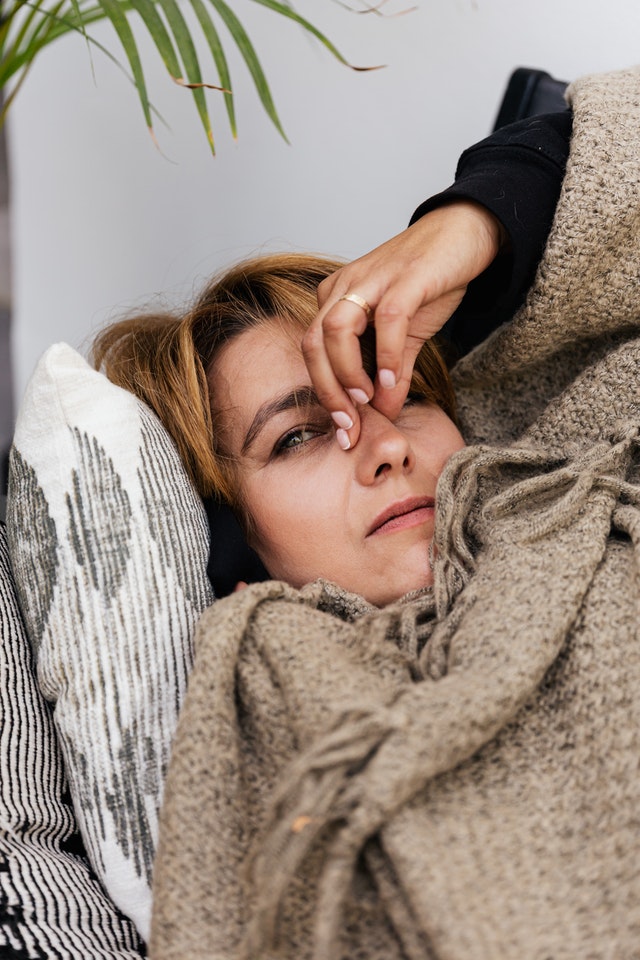Constantly feeling rundown? Or maybe plagued with coughing, chest pain, or a runny nose? Oftentimes when we go to a doctor to seek help in alleviating these symptoms, we’ll receive a “maybe diagnosis” and a prescription. Sometimes they’ll even tell us to fix our diet or to exercise more. Anything and everything except what actually might be causing the issue.
The average human takes 20,000 breaths a day, and most of those are inside our homes. When we feel ill, we’re quick to look for a disease or illness, but we should also be considering a factor right in front of our noses: environmental conditions. Specifically, one of the largest contributing environmental factors to our health: air quality. When mold or bacteria is present in a home, and it’s much more common than many may think, indoor air quality takes a huge hit. When the air we’re breathing in is highly contaminated, adverse health reactions begin to take hold.
The Mold Issue
Mold is a type of fungi that reproduces by creating microscopic spores. These spores can ride the air current anywhere and everywhere, even right into a home. When these spores land in a damp environment in a house, they’ll begin to colonize which means more and more spores building up in the indoor air. If they find another damp environment, like a carpet or bathroom wall, that’s been wet for 24-48 hours, they’ll begin to colonize that spot as well. One mold problem is often indicative of more.
Many species of molds are also able to produce microscopic toxins, mycotoxins. These tiny byproducts float through the air with the mold spores, landing on anything and everything they come in contact with. With the presence of molds, spores, and other contaminants in the air, adverse health reactions can begin to display.
Mold and Health
An immune system tags mold spores in the body as foreign invaders, initiating an allergic response. Over time the immune system can fight off the attack, but eventually, it will become overwhelmed if the exposure continues. Those with preexisting conditions or those with compromised or developing immune systems, like the elderly and children, will be affected quicker and to a greater extent; but everyone can eventually experience symptoms. If mycotoxins are present as well, they’ll begin to build up and toxify the body, causing a range of acute and chronic health effects on top of the mold symptoms.
These symptoms range from irritating to more severe. While some may only experience sniffs and a cough, others can develop chronic fatigue, respiratory issues, digestive issues, neurological issues, and joint pain. No two situations are the same. Research continues to identify how mold exposure truly affects the body and to what extent. One of the key indicators for mold exposure, though, is persistent symptoms. They don’t get worse and then get better- every day will seem like a battle.
What Can You Do?
The thing to remember is that any home can have mold, whether brand new or 50 years old. Mold needs very little to survive and thrive, and as a society, we don’t focus nearly enough on mold prevention. For those that think they might have mold, the first step is to hire a qualified mold inspector to test the indoor air quality. They should identify mold species present, spore volume, bacteria or toxin presence, and the sources of the problems. If they find a problem, a remediation team will need to come in and address each issue and all of the contamination. Without proper detoxification, of the home and the body, the symptoms will continue to persist.
If the test doesn’t show an established mold presence, taking preventative measures will help ensure the clean air quality in a home. Stopping the problem before it starts will not only save time and money but will help prevent adverse health reactions from starting in the first place. Society as a whole may not focus nearly enough as we should on air quality, but that doesn’t mean we can’t start pushing for more awareness to become our own health advocates.

 Michael Rubino is the owner of All American Restoration and the author of The Mold Medic. He is an international mold remediation expert with nearly a decade of field experience working with individuals who are immunocompromised to improve the air quality in their homes. Rubino is a council-certified Mold Remediator by IICRC and ACAC and a contributing member, sponsor, and speaker for the Indoor Air Quality Association. He works with roughly seventy-five to 100 families each year as they return to their homes after mold exposure.
Michael Rubino is the owner of All American Restoration and the author of The Mold Medic. He is an international mold remediation expert with nearly a decade of field experience working with individuals who are immunocompromised to improve the air quality in their homes. Rubino is a council-certified Mold Remediator by IICRC and ACAC and a contributing member, sponsor, and speaker for the Indoor Air Quality Association. He works with roughly seventy-five to 100 families each year as they return to their homes after mold exposure.


